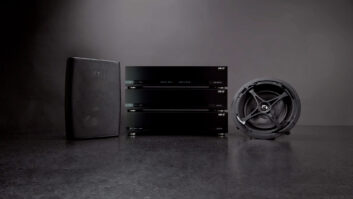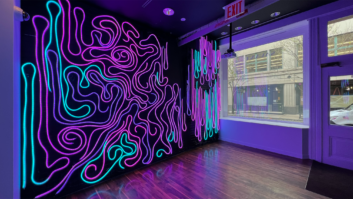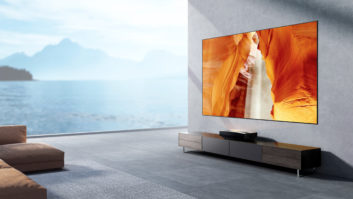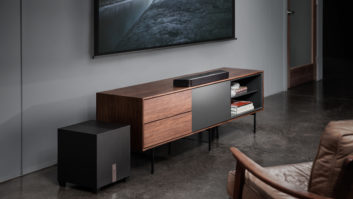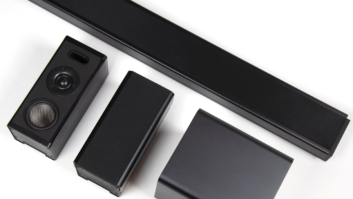Have you ever noticed that lip sync seems a little funky on today’s plasma or fixed-pixel projection display systems? You are right; lip sync keeps getting worse. All the time I run into systems with increasingly long picture-to-sound delays, and it drives me crazy.
I was walking through one manufacturer’s trade show booth recently, and a concert DVD’s video was so far out of sync with its audio that the snare drum’s sound was consistently on the top of the drum-stick’s upswing. That’s pretty darned syncopated.
It is known from film production that typical humanoids can detect lip sync errors of one full frame of delay. At 24 frames per second in film, that translates to 42 ms. It is also known that film sound editors, who synchronize soundtracks for a living, can detect an error after half a frame (that’s only 21 ms). I would say that those of us who are supplying high-end home theater systems to our well-deserving clients should offer them a target of less than 30 ms of sound-to-picture sync error.
How can you tell if the sound is off? If it’s way off, then the error is really obvious. If the sync error is only slight, however, I can usually tell because the dialog sounds soft. To put it another way, your eyes are always looking at lips and your brain is unconsciously reading them. If the sync is out, there’s a mental disconnect, and dialog clarity plummets. For this reason, you will often find that foreign-language-dubbed versions of Hollywood flicks usually have much louder dialog-to-music/effects balances than the original, English release. Just listen to what Ah-nuld sounds like in French on the Terminator 3: Rise of the Machines DVD; it’s hilarious!
The reason for the sync error is video processing delay time in the display and/or scan converter. The incoming video needs to be converted to the digital domain. It is then stored in a buffer for one, two or three frames worth of time (at video’s 30 frames per second, that’s up to 99 ms), so that the signal can be analyzed, upconverted, noise-reduced, and rescanned to the display system’s native resolution. Next, the signal may need to be converted back to the analog domain or further processed for additional enhancements. Altogether, you can end up with 100 ms or more of video delay. Can you notice this delay? You bet; any common home theater owner can.
So what do you do? Your only solution is to delay the audio signals in all the channels by the same amount as the video. A few rare products, such as the Lexicon MC-8/12 and the Denon AVR-5803 provide this feature. If you’re not using one of these units, you can add an external digital delay unit between the surround controller and the amplifiers. Decent units are available from several pro-audio manufacturers such as Lexicon and Rane. You then need to make sure to delay all the audio channels equally. Test signals are available on the Digital Video Essentials test DVD, so go hunt them down.
Better yet, you can add a digital equalizer in the chain and, for a little more money, get to correct the room’s inherent frequency response errors. Such a deal!
Now, a big caveat (it’s never easy, is it?). Because picture-sound sync is set by the mastering engineer during the film-to-video transfer process, you will find variations in sound sync from the source material. To make things worse, I heard that one Hollywood facility was using plasma sets for monitoring until they realized that their resulting work was way out… Ironically, it would have looked fine at your customer’s house with the same plasma set!
So, unfortunately, you can’t really just set a fixed compensation delay these days. You will need to set up the automation system controls to start at the ideal delay amount to compensate for the video chain’s errors, and then offer a plus/minus delay setting that will alter all the delay units at the same time. Darn, this can actually get to be really complex programming. To make matters worse, some audio signal processing units don’t offer on-the-fly updates for delay through their RS232 port. That means more legwork for you. Think of it as one more reason why you, not the discount retailer down the street, are the right dealer for the job.
